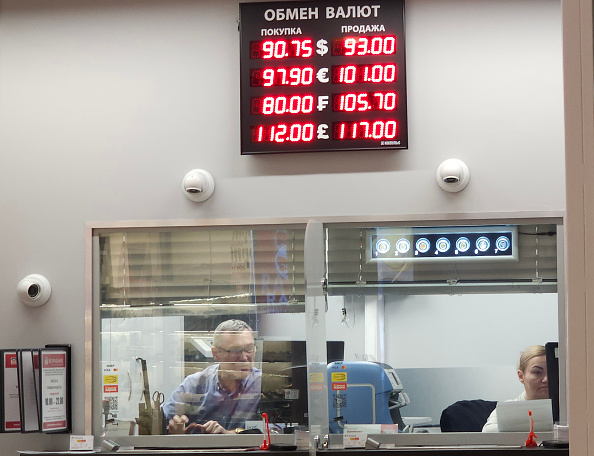With the latest polls showing the UK Labour Party commanding a 25 per cent lead over the governing Conservatives, European Union leaders may think a Labour victory – and more sympathetic government in Downing Street afterwards – may be a done deal.
Any such deal, though, is far from done.
Labour will need a 12.7 per cent swing to win a UK parliamentary majority, much bigger than former Labour leader Tony Blair’s 10.2 per cent in 1997.
Polls on February 7 and 8 suggest Labour now would achieve an 11.5 per cent swing, said election commentators Colin Rallings and Michael Thrasher, both researchers at Nuffield College, Oxford.
A shift of less than 12.7 per cent was “likely to produce a hung parliament, with no one party having an overall majority”, they said.
To put 12.7 per cent in context, it is “still substantially more” than Blair’s 1997 landslide election win and “indeed more than double that at any other election since 1945”, the pair added. That was in reference to the record 12 per cent the late former Labour prime minister Clement Attlee achieved in 1945.
“[Former Conservative prime minister] Boris Johnson provided a majority that will take a lot of overturning,” Annunziata Rees-Mogg, a ex-MEP representing the UK’s East Midlands, told Brussels Signal on February 7.
Labour faces an uphill battle to overturn the 2019 general election result that saw Johnson’s Tory party win an 80-seat majority.
His 43.6 per cent of the vote against then-Labour leader Jeremy Corbyn was the highest percentage any party has achieved since the 1979 UK general election.
Even a smaller 4.2 per cent swing from the Conservatives to Labour would deprive the Tories of a majority but still leave them the largest party.
With any more than an 8.2 per cent shift, Labour would be the largest party, although below 12.7 per cent it might need coalition partners – such as a “Lib-Lab” pact with the Liberal Democrats.
Alternatively, Labour could plump for a secure “confidence-and-supply deal”, where smaller parties would back its leader Sir Keir Starmer’s party in budget votes but not join a coalition.
Former prime minister Theresa May’s Conservatives agreed such a deal with Arlene Foster’s Northern Ireland Democratic Unionist Party (DUP) after the 2017 general election.
By law, current Prime Minister Rishi Sunak needs to dissolve Parliament by December 17 and call a general election no later than January 28, 2025.
On January 4, he said an election would likely be “in the second half of the year”.
A hung parliament with a Lib-Lab coalition, or supply agreement, sounds to some likely to give the upper hand to the traditionally pro-EU Liberal Democrats. In September 2020, the LibDems’ party conference backed “a longer-term objective of UK membership of the EU” – a goal it reaffirmed in spring 2022.
The issue is that, under its current leader Sir Ed Davey, the LibDems are focused on winning back “swing voters” in Southwest England, most of whom voted Conservative in 2019.
So Davey’s party has backpedalled on talk of re-joining the EU or Single Market. He told the LibDem September 2023 conference that doing so was “off the table” for the time being.
The political geography of the UK is changing in more ways than one.
On November 15, the Privy Council, a formal body of advisers, approved new parliamentary boundaries for England that the Boundary Commission – which determines the boundaries of parliamentary constituencies – recommended in June.
These reflect shifts in relative population numbers and have generally favoured the Tories.
England, where the Tories are traditionally favoured, will gain 10 seats, while Scotland and Wales – key for Labour’s fortunes – will lose two and eight, respectively.
Without the boundary shifts, Labour would have needed 12 per cent for a majority, Rallings and Thrasher said. With such changes, Starmer’s party will need 12.7 per cent.
If the new boundaries were in place in the 2019 general election, the Tories would have won seven more seats and Labour two fewer.
Another open question is whether arch Brexiteer Nigel Farage’s Reform Party will complicate Labour’s ability to win back working-class votes. That party’s public support has doubled in the past year, from 5 to 10 per cent.
Turnout among swing voters who opted for Johnson will also be key, argued Rees-Mogg.
“The biggest threat to the Conservatives is not the Labour Party, nor the Reform limited company, but apathy amongst Conservative voters,” she said.
“If Rishi can find a way to enthuse them enough to vote on the day, then it is not a foregone conclusion. If he cannot, Labour will not win the election, but the Tories will lose it.”
Anthony Boutall, who is standing as Conservative MP candidate in Streatham and Croydon North in South London, said: “I believe we stand a chance.”
“We know that Labour’s poll lead is soft. I haven’t met a single person in Streatham, Norbury, Thornton Heath, Upper Norwood, or Crystal Palace [London boroughs] who has had anything positive to say about Keir Starmer,” he added.
Residents of those areas, many regarded as “disadvantaged families”, attribute “poor housing, high taxes and regressive ULEZ [Ultra Low Emission Zone] bills” to Labour mayor Sadiq Khan, Boutall said.
There is also the question of the Scottish National Party (SNP). It led Scottish Labour by 7 points in another February 7 poll of general election voting intentions.
Labour, though, is catching up. The lead was 10 points in November.
With 43 Scottish Nationalist MPs in Westminster at the moment, compared to 15 LibDems, Humza Yousaf, the SNP leader and First minister of Scotland, could make the party a strong contender as a coalition partner for a minority Labour doing the maths for the majority.
The SNP is also stridently pro-European: unlike the LibDems, the SNP is not angling for votes from Brexit-loving Tories.
An independent Scotland could “regain what has been lost because of Brexit”, Yousaf said in November.
So, with a hung parliament looking increasingly likely, both Labour and Liberal Democrats are seeking to win back Johnson-era Conservative voters.
EU leaders might, therefore, be misguided in placing high hopes on a coalition of Sir Keir and Sir Ed as their knights in shining armour.





